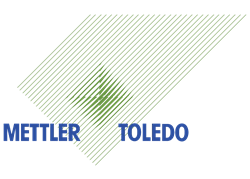In this interview, AZoMaterials speaks with Stefan van der Wal of METTLER TOLEDO about the critical role of inline analysis in PCAM production and how advanced process control technologies improve product quality and reliability in lithium-ion battery manufacturing.
Why is the crystallization stage in PCAM production so crucial?
The crystallization - or precipitation - of nickel, cobalt, and manganese hydroxide is critical because it directly defines particle size and morphology. These properties have a major impact on final battery performance. Even small shifts in pH during this stage can significantly change particle characteristics.
What makes pH the most critical variable in this process?
pH has a direct impact on particle size, making it one of the most sensitive variables in the process. Even slight drifts can cause products to fall out of spec. Relying on infrequent lab tests introduces variability, so real-time pH control is essential for maintaining consistency and meeting quality targets.

Image Credit: asharkyu/Shutterstock.com
What challenges exist with conventional pH sensors in PCAM processes?
Standard pH sensors often use diaphragms that clog quickly due to heavy precipitate formation, leading to rapid signal drift - sometimes within just two days. This makes them unreliable and maintenance-intensive.
How does the InPro?4260i sensor address these issues?
The InPro?4260i features a diaphragm-free, open-junction design with a solid polymer reference electrolyte. It resists clogging and handles buildup through simple agitation, allowing it to maintain stable, accurate readings over extended periods.
Can you explain the benefits of Intelligent Sensor Management (ISM)?
ISM provides continuous sensor diagnostics and enables predictive maintenance. Features like hot-swap calibration, real-time status alerts, and lifetime tracking help reduce downtime and ensure reliable measurements.
How does the InTrac?777e retractable housing support in-process control?
The InTrac?777e allows for safe removal and cleaning of the sensor during operation. Its sealed O-rings prevent leaks, while an integrated flushing chamber keeps the sensor hydrated and ready between batches.
What is EasyClean?200e, and how does it complement the system?
EasyClean?200e automates sensor maintenance with programmed water flushes and acid washes to remove buildup. This minimizes manual cleaning and keeps sensors functional over long production runs.
Besides pH, what other inline measurement is critical in PCAM processes?
Oxygen in the reactor headspace must be tightly controlled to prevent unwanted metal-oxide formation. METTLER TOLEDO’s InPro 6850iG oxygen sensor uses polarographic technology with ISM diagnostics for reliable in-situ monitoring.
How does the GPRO?500 analyzer enhance oxygen control at larger scales?
For larger-scale or combined off-gas streams, the GPRO?500 uses tunable diode laser (TDL) technology to measure oxygen in pipes as small as 2 inches. It’s moisture-resistant, low-maintenance, and includes continuous self-verification to ensure consistent performance.
About Stefan van der Wal
Stefan van der Wal is the Head of Industry Management at Mettler Toledo and has a degree in Industrial Management and Chemical Engineering. He has over 25 years of experience in the field of process instrumentation and liquid and gas analytics in process industries. Stefan is strongly involved in application engineering and product development and is behind the design and commercialization of various revolutionary new process analytical products and technologies.
analytics in process industries. Stefan is strongly involved in application engineering and product development and is behind the design and commercialization of various revolutionary new process analytical products and technologies.

This information has been sourced, reviewed and adapted from materials provided by METTLER TOLEDO - Process Analytics.
For more information on this source, please visit METTLER TOLEDO - Process Analytics.
Disclaimer: The views expressed here are those of the interviewee and do not necessarily represent the views of AZoM.com Limited (T/A) AZoNetwork, the owner and operator of this website. This disclaimer forms part of the Terms and Conditions of use of this website.